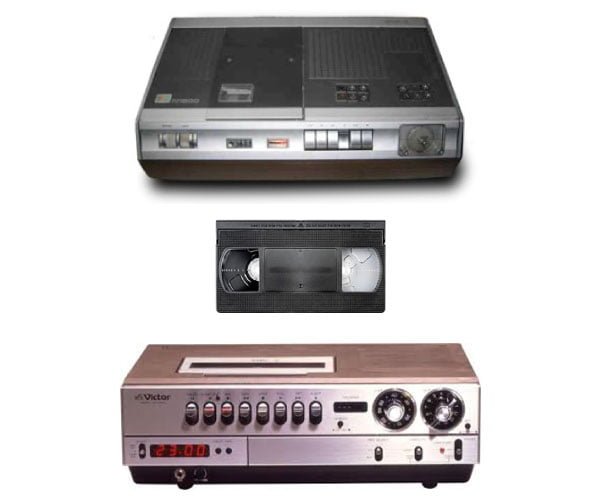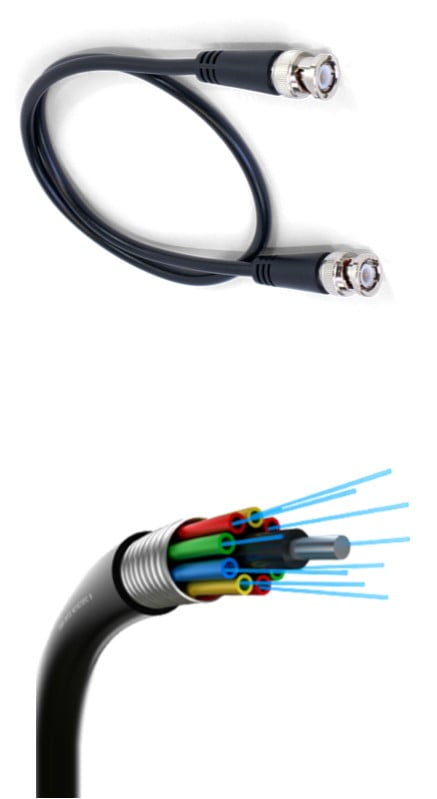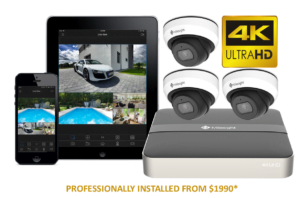CCTV History

Analogue Viewing
1942 Was the beginning of Closed Circuit Television when German engineer Walter Bruch designed and installed the first Black & White analogue camera for Siemens AG to remotely monitor the launching of the V2 rockets.

Video Tape Recorder
1956 Was the introduction of the Video Tape Recorder produced for commercial use by the Ampex Corporation led by Charles Ginsburg and team included the 19 year old engineer Ray Dolby. With a price tag of $50,000 this was technology that few could afford to utilize at the time.

Charged Coupled Device
1969 The first Charged Coupled Device was invented at AT&T Bell Labs by Willard Boyle and George E Smith.
1973 Ex Bell Labs researcher Gil Amelio lead ateam at Fairchild that produced the first commercial 2D CCD (100 x 100 pixels).
1975 Kodak engineer Steven Sasson invented the first digital camera using the Fairchild CCD.

Video Cassette Recorder
1972 The Video Cassette Recorder was produced by Philips based on the U Matic format with 1 hour of recording which made the technology more accessible but was only cost effective for commercial use.
1975 The VCR started gaining mass market traction Six major firms were involved in the development of the VCR: RCA, JVC, AMPEX, Matsushita Electric / Panasonic, Sony, and Toshiba.
1976 The first VCR to use VHS standard was the Victor HR-3300, and was introduced by the president of JVC and revolutionised the VCR market with the development of 120 and 180 Min recording times.

Multiplexing
Another significant development in the history of CCTV occurred during the 1990s, when multiplexing solutions became available. This technology allows video signals from multiple cameras to be displayed on one monitor.
The video signals from each camera is synchronised by the multiplexer recorded on a single Video Cassette Recorder. The same Multiplexer was required for video playback to retrieve each camera image in the same synchronised manner before displaying on a Monitor.

Digital Video Recorder
The first Digital Video Recorders appeared at the end of the 1990’s but it was the early 2000’s which marked the infiltration of computer based Hard Disc Drive video storage that replaced the VCR and Multiplexer in most CCTV systems.
The Digital Video Recorder was the CCTV industry’s most significant step towards Digital Technology and in just a few years advances in the Information Technology industry brought greater reliability and increased recording capacity through Embedded operating systems, larger Hard Disc Drives and video compression technology


Analogue v Digital?
Since the mid to late 70’s all CCD cameras where Digital devices but they still transmitted the video in an Analogue Signal over the conventional Coaxial Cables to an analogue recorder. Analogue Video Recorders were replaced by Digital Video Recorders in the early 2000’s but the legacy of Coaxial Cabling meant an Analogue Video signal was still the transmission format for most CCTV systems.
Analogue or Digital is no longer the question for new installations as there is no longer any valid argument for the use of Analogue in new installations because the minimum resolution (image size) for a professional IP camera is Full HD (1080p) which 600% greater than that of an analogue camera being only D1 (720p).
When we refer to Digital CCTV or IP CCTV this is typically the transmission of Digital Video Images using Internet Protocol (IP) over a Data Network to a Network Video Recorder, which has become the industry standard in the last decade. An IP Network consisting of structured Cat 5/6, Fibre cabling and/or WiFi equipment which is a more flexible and salable format of video transmission for modern buildings. Digital Video Cameras are now commonly available with 2, 3, 4 & 5 Mega Pixel image sensors allowing Ultra High Definition video to be transmitted unlimited distances providing easy access throughout the world.
We still provide a range of Analogue equipment to service and support the large number of analogue CCTV installations already in the field because of the use of coaxial cabling for analogue installations does not support IP transmission. There have been some attempts to sustain the legacy coaxial cabling installations by developing some HD Analogue, HD-CVI and HD-TVI signal transmissions systems but equipment options are limited and this would should only be used when coaxial cabling is existing.


